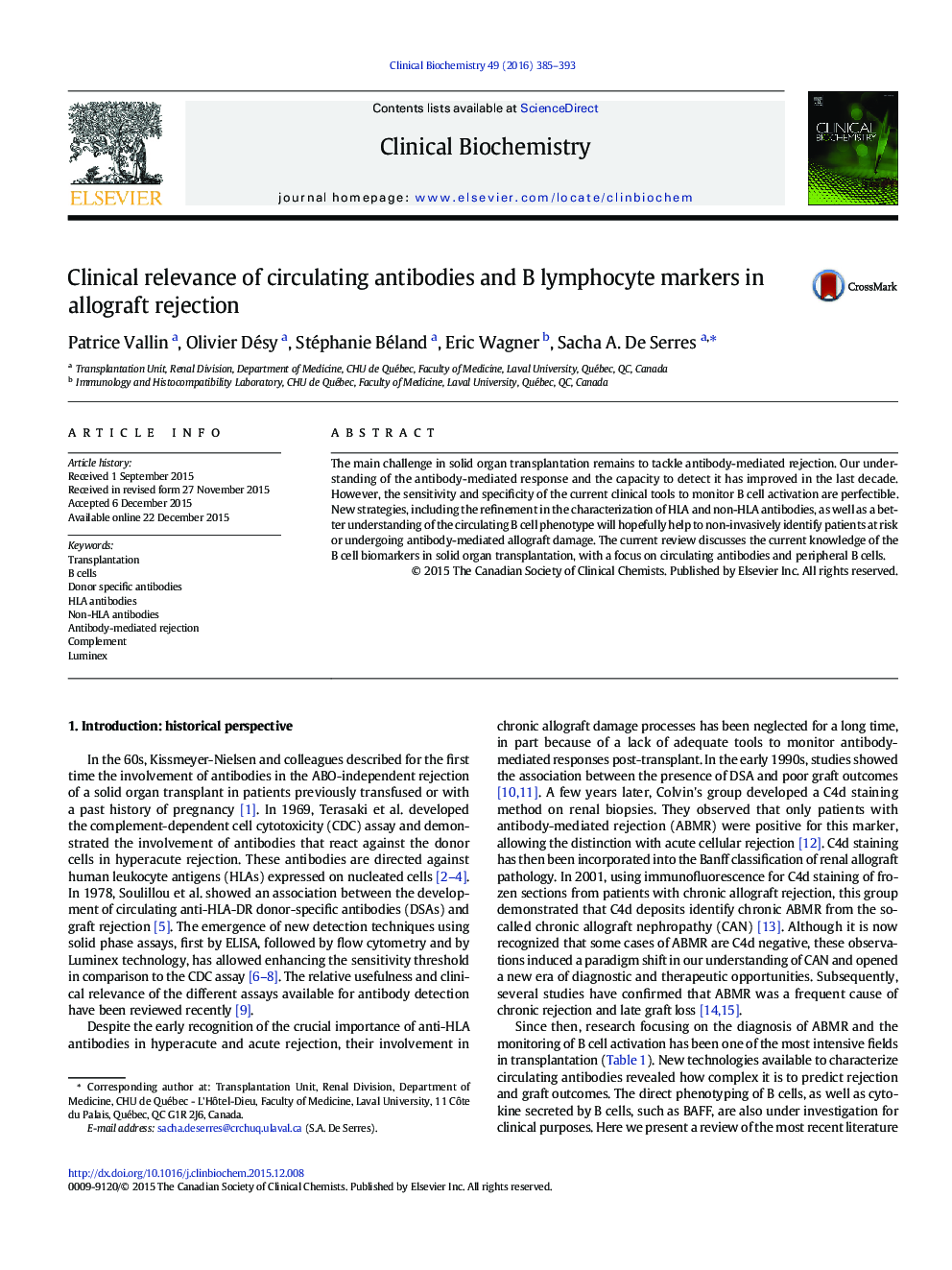| Article ID | Journal | Published Year | Pages | File Type |
|---|---|---|---|---|
| 1968621 | Clinical Biochemistry | 2016 | 9 Pages |
•Donor specific antibodies DSA detection is increasingly used for monitoring B cell responses.•DSA remains a complex and currently imperfect tool for clinical decision-making.•Longitudinal assessment of alloreactivity should be the preferred strategy for monitoring.•Refining DSA characterization is still needed to make it a strong biomarker.•The eplet paradigm may be the future of monitoring for anti-HLA antibodies.
The main challenge in solid organ transplantation remains to tackle antibody-mediated rejection. Our understanding of the antibody-mediated response and the capacity to detect it has improved in the last decade. However, the sensitivity and specificity of the current clinical tools to monitor B cell activation are perfectible. New strategies, including the refinement in the characterization of HLA and non-HLA antibodies, as well as a better understanding of the circulating B cell phenotype will hopefully help to non-invasively identify patients at risk or undergoing antibody-mediated allograft damage. The current review discusses the current knowledge of the B cell biomarkers in solid organ transplantation, with a focus on circulating antibodies and peripheral B cells.
